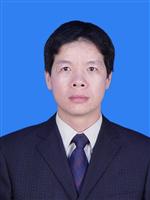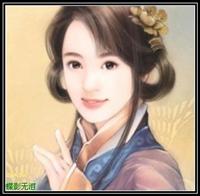Lecture 3
Could China Have Grown During
the First Half of the 20
th
Century
c
a
b
Production under Autarky (no trade)
Production of computers
and tomatoes occurs at the
point of tangency between
the PPF and the
Indifference Curves:
Which point is optimal and
feasible? a
Why not c?
Why not b?
Computers / textiles
Tomatoes / food
a
Alternative Production Outcome
(under Autarky--no trade) but in
Kingdom of the Skinny Nerds
Computers
Tomatoes
n
With different
preferences (IC
n
versus
IC
a
) … may choose to
produce more
computers and less
food (at point n) …
Who is happier?
Those in Kingdom A or
those in Kingdom N?
a
Production under Autarky (no trade)
Characteristic of autarky:
Consumption = production
Produce F
1
food and
consume F
1
food
AND
Produce T
1
textiles and
consume T
1
textiles
Textiles
Food
T
1
F
1
a
b
Growth: GDP
b
> GDP
a
How do you see growth?
U
a
> U
b
(in this case, production /
consumption of both food—
F
b
>F
a
—and textiles—
T
b
>Ta— is greater)
How does growth happen from
a to b?
-- technical change?
-- growth of inputs?
-- trade?
Original PPF New PPF
Economic growth, Type I
F
a
F
b
T
b
T
a
Textiles
Food
Gains from trade and specialization
Example
China’s point of view:
Food Textiles
autarky price $100/ton
$600/container
quantity produced 15 5
income (15*$100) + (5*$600) = $4,500
quantity consumed 15 5
trade price $200/ton $500/container
quantity produced 40 1
income (40*$200) + (1*$500) = $8,500
quantity consumed 20 (20*$200=$4,000) 9 (9*$500=$4,500)
a
Moving from Autarky (a) to Trade – Producing at International Prices
Textiles
Food
m
p
Iso-price line (traced
out by the ratio of
textile to tomato
prices), International
prices
Iso-price line (traced
out by the ratio of
textile to tomato
prices), domestic
prices in autarky
Q1: In what scenario is
food relatively more
valuable?
Q2: In what scenario can
you buy more textiles for
the same amount of
food?
Q3: In what scenario
would you want to
produce more food?
A: When facing
international prices!
a
Moving from Autarky (a) to Trade – Producing at International
Prices …
Textiles
Food
When facing
international prices,
where would the
country produce?
z 3500
a 4000
m 8500
m
p
Iso-price line (traced
out by the ratio of
textile to tomato
prices)
z (7)
y
7*500=3500
5
1
0
40*200 + 1*500=8500
15*200 + 5*200 = 4000
15 40
a
Where does a Nation Consume Under Trade?
Textiles
Food
m
c
When Nation produces
at m
p
, then it earns an
income of 8500 … and
when there is
international trade, it
can afford any point on
the iso-price line that
passes through m
p
.
Which one will it
choose?
Depends on
preferences … in this
case, it will choose m
c
!
m
p
a
Growth from Trade and Market
Liberalization/Commercialization?
Textiles
Food
m
c
Difference between
optimal solution under
autarky and optimal
solution under trade:
Under trade: production is
NOT equal to
consumption
Specialize in production
(m
p
)
Trade and consume at m
c
Growth: Um
c
> Ua
m
p
a
How do we see trade?
Textiles
Food
m
c
m
p
1
10
production
imports
4020
consumption
Exports
a
What Happens after Economy Experiences Growth from
Trade and Market Liberalization/Commercialization?
Textiles
Food
m
c
Growth: Um
c
> Ua
But, after hit m
c
… then
there is no more growth,
UNLESS there is
additional technological
change!
m
p
Growth in Traditional Economy
? Through 1911:
–?
–?
–?
–?
–?
Growth in Traditional Economy
? Through 1911:
? Phase I
– Early ripening rice from southeast Asia
– New types of organic manures: manure / algae /
alfalfas
– New irrigation systems
– Rice shoots sprouted in a rice bed / transplant
– Additional laborers from population growth
? Diminishing marginal returns set in (why? Technical changes
not fast enough)
a
b
Original PPF New PPF
Economic growth in China, Phase I
F
a
F
b
T
b
T
a
Textiles
Food
How does expansion of
the PPF occur?
-- Rising inputs
-- Technological change
Production function and the rise of output from increasing
inputs
Food
Labor
Output increases
as the quantity of
input increases
L1
L2
F2
F1
Diminishing Marginal Returns … and falling average product
Food
Labor
Although output
increases as the
quantity of input
increases, the
AVERAGE output
per input falls …
What happens at
really high levels
of output?
L1
L2
F2
F1
When move from L1 to L2, what
happens to the average rise in output
for a 1 unit rise in input?
1 unit
L2
L1
Average
product
Technological change from the perspective of the
production function
Food
Labor
Technological
change: for a
given amount of
input, get more
output (e.g., new
seeds / new
manures / etc.)
Technological change and rising average product
Food
Labor
Technological
change: for a
given amount of
input, get more
output (e.g., new
seeds / new
manures / etc.)
1 unit
Technology 1, T1
Technology 2, T2
T1
T2
average
product
Growth in Traditional Economy: A
Race between slow technical
change and rising population
? Through 1911:
? Phase II
– Move up into the mountains
– Maize and potatoes and sweet potatoes from new
world
– Systems of granaries
– Additional laborers from population growth
? Diminishing marginal returns set in (why? Technical changes
not fast enough)
Growth in Traditional Economy
? Through 1911:
? Phase III
– Commercialization of the country-side
? Water transport
? Money and banks
? Contracts / legal institutions (courts / merchants associations)
? Develop vast networks of small businesses
– Additional laborers from population growth
? Diminishing marginal returns set in (why? Technical changes
not fast enough)
a
b
Original PPF New PPF
Economic growth in China, Phase I to III
F
a
F
b
T
b
T
a
Textiles
Food
Story of Growth in Traditional China
Slow growing technological change, rise in
specialization from commercialization, expansion of
population and stagnant average product
Food
Labor
T2
T1
L1
L2
1
2
3
Naughton: most
of people in
poverty … there
was upward
mobility … but for
most of China’s
history: rich were
rich / poor were
poor
Elvin: “high level
equilibrium trap”
Needham Puzzle II (could China
have developed during the 1911 to
1949 period?)
? Brandt, Rawski, Meyer:
– There was growth:
??
??
??
Needham Puzzle II (could China
have developed during the 1911 to
1949 period?)
? Brandt, Rawski, Meyer:
– There was growth:
? Commercialization—new crops / handicrafts
? Extension system and new varieties
? Modern industry—Foreign enclaves / Chinese
entrepreneurs
There was a crisis in China that
was not helping modernization
? Exploitation of forests and resources
? End of frontier (no more land)
? Yields may be as high as traditional technology
allowed (Tawney: “The Chinese peasant is like a
man standing on tiptoe up to his nose in water—
the slightest ripple is enough to drown him.”)
? Low rates of taxation: 2% of GDP [what was
Japan? – at least 10% and rising]
? War (Taipings in the 19
th
century / warlords and
Japan in the first half ot he 20
th
century)
Response of the Gov’t
? Japan: remarkable … land reform / universities /
government led programs of technology transfer,
state-owned/pushed industrialization and
manpower training
? China: tried … Wuhan steel mills in 1890s /
extension system in the 1920s / opening to
foreign investment (rise in textiles / food and
public utilitites—80% in 1930), much of it by
Chinese industrialists!
Beginning of human capital exchange … Chinese
students to the US and foreigners to China
But China’s effort too little, too late
and only on the surface
? Industrial output: 2.0%
? Industrial workforce 0.4%
? Few linkages …
– Due to poor infrastructure in China, proper
– especially in Manchuria, due to Japanese policy
? Little control: lost enclaves and ability to defend
itself …
? Lots of instability: floods / droughts / civil war /
impending wars … who would invest?
? Corruption [cause and effect]
End of the end
? Japanese War – 8 years
? Civil War – 4 years
[End of investment / human capital investment]
? Rapid inflation
[End of markets]
Reconciling Conflicting Stories
? Brandt, Rawski, and Meyers [economists]
– China was growing
? Huang / Elvin [historians]
– China was destined to fail
? Who is right?
a
b
Original PPF New PPF
Economic growth in China, 1911-1937
F
a
F
b
T
b
T
a
Textiles
Food
From beginning of
investment, technology
transfer and
commercialization
Story of Growth in China, 1911 to 1937
Slow growing technological change, limited gain from
specialization from commercialization, continued
expansion of population �?stagnant average product
Food
Labor
T2
T1
L1
L2
1
2
3
The lack of rapid
technology
change … left
China in a
familiar position
…
BOTH COULD
BE RIGHT!
a
PPF, 1936
Economic “growth” in China, 1937 to 1949
Textiles
Food
The effect of:
War
Corruption
Deterioration of
Infrastructure
Inflation
Etcetera
PPF,
1949
b’
What do you think?
? Two views:
– China under Capitalism did not do anything right …
there was no movement towards creating the
institutions that would have led to rapid economic
change.
– China under the Nationalists did not have a chance …
there was evidence of good things beginning … they
were undercut by War and other external factors … If
there had of been peace, China would have begun its
rapid modernization in the 1950s / and would not
have waited until much later …
| 课件名称: | 加州大学:发展经济学在中国(英文版) |
| 课件分类: | 经济 |
| 课件类型: | 电子图书 |
| 文件大小: | 10.46MB |
| 下载次数: | 5 |
| 评论次数: | 3 |
| 用户评分: | 7 |
- 1. 加州大学:发展经济学在中国(英文版):lectur10
- 2. 加州大学:发展经济学在中国(英文版):lecture 8
- 3. 加州大学:发展经济学在中国(英文版):lecture1
- 4. 加州大学:发展经济学在中国(英文版):lecture2
- 5. 加州大学:发展经济学在中国(英文版):lecture3-china-century
- 6. 加州大学:发展经济学在中国(英文版):lecture4-china-famine
- 7. 加州大学:发展经济学在中国(英文版):lecture5
- 8. 加州大学:发展经济学在中国(英文版):lecture7-1
- 9. 加州大学:发展经济学在中国(英文版):lecture9





